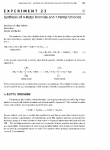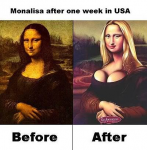You seem to be missing the point that Wizard is trying to make, it is broke and it needs fixed. Any concentration of H2SO4 above 74% has strong oxidising properties meaning its impossible to not make Br
2 with NaBr and H2SO4 without adding water. Acetic acid is not sufficient enough to assure that Bromine is not made.
If Br
2 is present you will get Dibromo safrole which will become a serious headache later on because it will aminate and it will also carry over with simular properties as MDMA. There is little mention of bromine becoming an issue quite possibly because the people that have performed the experiments are thinking that what they have is indeed MDMA when its not.
Well,main reason why GAA is used instead of water as reaction media is that max. concentration
of HBr in water is too low to get enough bromosafrole.
Not fully true, its used because the acid can act to catalyse placing OH across the double bound. This is the reason Mol sieves are used in these type of reactions that use (aq)HBr because its needed to remove the water and push the reaction to the right.
What Wizard is suggesting is by far the best way of generating insitu HBr for use in hydrobromination reactions. There is no Br2 formed, there is no gas formed since its insitu in an AcOH solvent and the concentration of HBr in Acetic acid is much larger then in water. Without water present there is also not the competing reaction of hydroxylation which can win out over bromination with ease.NaBr should be dissolved in AcOH and Phosphoric acid added because I highly doubt that Acetic acid is strong enough to push the equalibrium far enough to Hydrobromic acid. Concentrations of HBr in AcOH can be made as high as 70% IIRC.







 I know you haven't understood my last post what-so-ever!! Have another read, and maybe you'll have an epiphany.
I know you haven't understood my last post what-so-ever!! Have another read, and maybe you'll have an epiphany.
 One can get hydrobromic acid or bromine, one wouldn't want the complications of a mixture
One can get hydrobromic acid or bromine, one wouldn't want the complications of a mixture  The end results from the effort applied
The end results from the effort applied 
 Dr Strangelove was the first member of the Hive to get this method working, as was posted in the
Dr Strangelove was the first member of the Hive to get this method working, as was posted in the